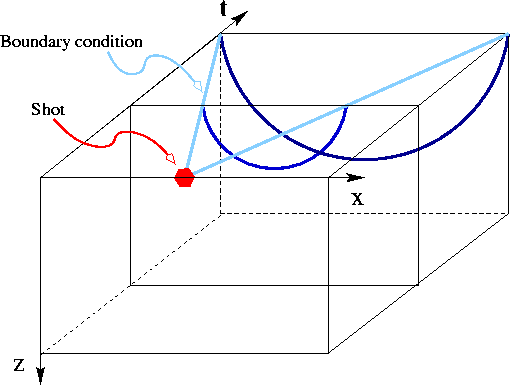Another possible surface boundary condition could be the Green function of the Helmholtz equation for a constant velocity medium at z=0, convolved with the wavelet:
| |
(4) |
| |
(5) |
|
cube_bc
Figure 2 Surface boundary condition for the source wavefield. |  |
The idea is illustrated in Figure 2, where a linear moveout depending on the surface velocity dictates the time-position of the wavefront. As time increases, the amplitude should decay as the inverse of the distance to the shot position (geometrical spreading). Figure 1c shows the new boundary condition.
As oppose to Zhang's approximation the Green function is computed without the need of the square root operator. Thus, there is no need of cutting off the spatial wavenumbers. This allows to keep the accuracy of the steep angles.